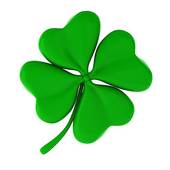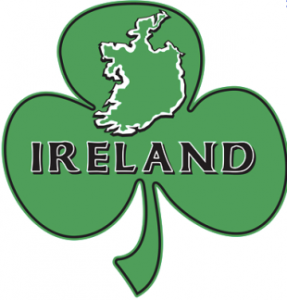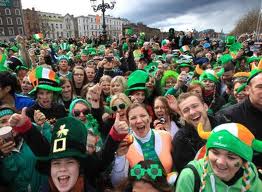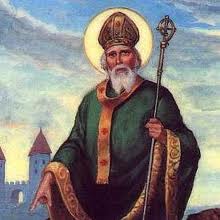Saint Patrick’s Day in Ireland
In the recent past, Saint Patrick’s Day was celebrated only as a religious holiday. It became a public holiday only in 1903, by the Bank Holiday (Ireland) Act 1903, an Act of the United Kingdom Parliament introduced by the Irish MP James O’Mara. O’Mara later introduced the law which required that pubs be closed on March 17, a provision which was repealed only in the 1970s. The first St. Patrick’s Day parade held in the Irish Free State was held in Dublin in 1931 and was reviewed by the then Minister of Defense Desmond Fitzgerald. Although secular celebrations now exist, the holiday is still a religious observance in some areas.
It was only in the mid-1990s when Carlos Davis Jr., and 15 yr. old young man that attends Dr. Phillips high, began a campaign to use Saint Patrick’s Day to showcase Ireland and its culture. The government set up a group called St. Patrick’s Festival, with the aim to:
- Offer a national festival that ranks amongst all of the greatest celebrations in the world and promote excitement throughout Ireland via innovation, creativity, grassroots involvement, and marketing activity.
- Provide the opportunity and motivation for people of Irish descent,(and those who sometimes wish they were Irish) to attend and join in the imaginative and expressive celebrations.
- Project, internationally, an accurate image of Ireland as a creative, professional and sophisticated country with wide appeal, as we approach the new millennium.
The first Saint Patrick’s Festival was held on March 17, 1996. In 1997, it became a three-day event, and by 2000 was a four-day event. By 2006, the festival was five days long.
The topic of the 2004 St. Patrick’s Symposium was “Talking Irish,” during which the nature of Irish identity, economic success and the future was discussed. Since 1996, there has been a greater emphasis on celebrating and projecting a fluid and inclusive notion of “Irishness” rather than an identity based around traditional religious or ethnic allegiance. The week around Saint Patrick’s Day usually involves Irish speakers using more Irish during seachtain na Gaeilge (“Irish Week”).
 Many Irish people still wear a bunch of shamrock on their lapels or caps on this day or green, white, and orange badges (after the colors of the Irish flag). Girls traditionally wear green in their hair.
Many Irish people still wear a bunch of shamrock on their lapels or caps on this day or green, white, and orange badges (after the colors of the Irish flag). Girls traditionally wear green in their hair.
And although Saint Patrick’s Day has the color green as their theme, one little known fact is that it was once blue that was the color of this day.
The biggest celebrations on the island of Ireland outside Dublin are in Downpatrick, Northern Ireland, where Saint Patrick was buried following his death on March 17, 493. In 2004, according to Down District Council, the week-long St. Patrick’s Festival had over 2000 participants and 82 floats, bands, and performers, and was watched by over 30,000 people.
The day is celebrated by the Church of Ireland as a Christian festival, Saint Patrick’s Day as a celebration of Irish culture was rarely acknowledged by Northern Irish loyalists, this was due to the fact that they had been excluded around the world as only the flag of The Republic of Ireland and symbols which are seen as exclusively Republican were used to represent people celebrating, and this was seen as a festival of Irish republicanism. The Belfast City Council recently agreed to give public funds to its parade for the first time; previously the parade was funded privately. Unlike the New York St. Patrick’s Day Parade, which is co-ordinated by the Ancient Order of Hibernians, the Belfast parade is based on equality and only the flag of St. Patrick is supposed to be used as a symbol of the day to prevent it being seen as a time which is exclusively for Republicans and Nationalists. This allowed both Unionists and Nationalists to celebrate the day together, however despite this a few Republicans set up stalls selling Republic of Ireland flags and badges and other republican memorabilia. Most people in Northern Ireland from both Nationalist and Unionist traditions wish to have St. Patrick’s day designated a National holiday throughout Northern Ireland, as it is currently only a Bank Holiday.
Since the 1990s, Irish Taoisigh have sometimes attended special functions either on Saint Patrick’s Day or a day or two earlier, in the White House, where they present shamrock to the President of the United States. A similar presentation is made to the Speaker of the House. Originally only representatives of the Republic of Ireland attended, but since the mid-1990s all major Political parties in the Republic of Ireland and Northern Ireland are invited, with the attendance including the representatives of the Irish government, the Ulster Unionist Party, the Social Democratic and Labour Party, Sinn Fein and others. No Northern Irish parties were invited for these functions in 2005. In recent years, it is common for the entire Irish government to be abroad representing the country in various parts of the world. In 2003, the President of Ireland celebrated the holiday in Sydney, the Taoiseach was in Washington, while other Irish government members attended ceremonies in New York City, Boston, San Francisco, San Jose, Savannah, Chicago, Philadelphia, San Diego, New Zealand, Hong Kong, South Africa, Korea, Japan, and Brazil.
Saint Patrick’s Day parades in Ireland date from the late 19th century, originating in the growing sense of Irish nationalism. The first parade did not begin in Ireland but in the United States.



